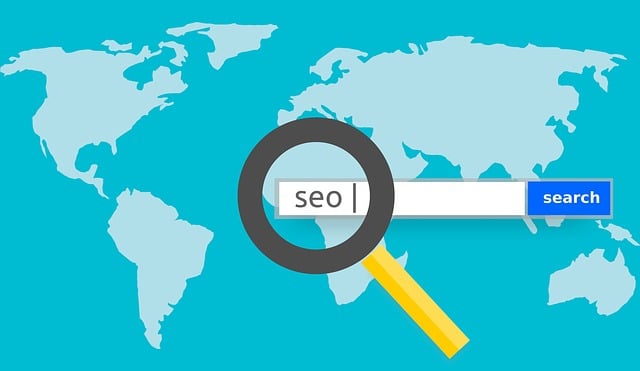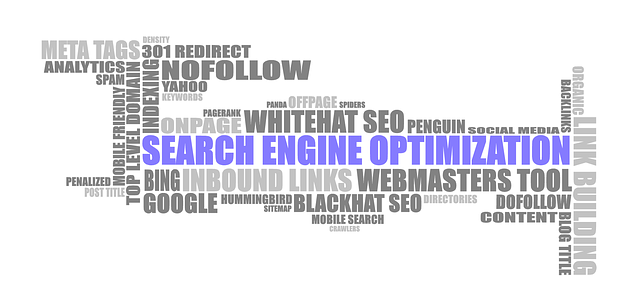White-Hat SEO Techniques are ethical e-commerce optimization strategies focusing on user value, website structure, relevant content, and mobile responsiveness. Key tactics include keyword research for specific product terms, optimizing meta elements, high-quality content creation, strategic backlink building, enhancing user experience, local SEO for brick-and-mortar integration, and regular performance analysis. These methods drive organic traffic, build trust, and improve conversion rates without manipulative Black-Hat practices, ensuring long-term e-commerce success.
In today’s competitive e-commerce landscape, understanding and implementing effective White-Hat SEO techniques is crucial for online success. This article guides you through a comprehensive approach to boosting your e-commerce rankings ethically. We explore essential strategies such as keyword research tailored for e-commerce, on-page optimization, high-quality content creation, and inbound linking.
Additionally, we delve into enhancing user experience and local SEO integration. By combining these White-Hat SEO techniques with regular monitoring, businesses can achieve long-term growth and stay ahead in the digital market.
Understanding White-Hat SEO: The Ethical Approach

White-Hat SEO is an ethical and sustainable approach to optimizing e-commerce websites for search engines. It involves using proven, approved techniques that align with search engine guidelines, focusing on providing genuine value to users. This method contrasts with Black-Hat SEO tactics, which often employ manipulative strategies that can lead to penalties from search engines. By adhering to White-Hat principles, e-commerce businesses can enhance their online visibility without compromising the user experience.
Key elements of White-Hat SEO Techniques include creating high-quality, relevant content that satisfies user queries; optimizing website structure and navigation for easier crawling by search engine bots; implementing effective keyword research to target the right audience; ensuring mobile responsiveness and fast loading speeds; building quality backlinks from reputable sources; and promoting a seamless user journey across all devices. These practices not only help e-commerce sites rank higher but also foster trust, drive organic traffic, and lead to better conversion rates over time.
E-commerce Specific Keyword Research Strategies

In the dynamic landscape of e-commerce, understanding your target audience and their search behavior is paramount. Keyword research, therefore, becomes a crucial White-Hat SEO technique to drive organic traffic. Unlike general industries, e-commerce businesses must delve into more niche and product-specific keywords that accurately reflect customer queries. Tools like Google Keyword Planner, SEMrush, or Ahrefs can help uncover long-tail keywords that are less competitive yet highly relevant to your products.
For instance, instead of targeting broad terms like “shoes,” focus on specific types like “women’s running shoes with arch support.” This strategic approach ensures that your content is tailored to address genuine customer needs, boosting the chances of ranking higher for product-related searches. By combining these White-Hat SEO techniques with rich, informative content and a user-friendly site structure, e-commerce businesses can attract and convert customers effectively.
Optimizing On-Page Elements for Maximum Impact

When implementing white-hat SEO techniques for e-commerce, optimizing on-page elements is a crucial first step. This involves refining key elements like meta titles, descriptions, and header tags to ensure they are not only engaging but also include relevant keywords. Crafting compelling meta titles that accurately reflect the page content while incorporating targeted keywords can significantly improve click-through rates from search engines.
Similarly, rich, informative descriptions that entice users while providing essential product details can enhance user experience and reduce bounce rates. Utilizing header tags effectively to structure content not only aids search engine crawlers in understanding the page but also makes the content more scannable for visitors. These strategies collectively contribute to higher rankings, increased visibility, and ultimately, improved sales conversion rates in the competitive e-commerce landscape.
Leveraging High-Quality Content Creation

In the realm of White-Hat SEO Techniques for E-commerce, high-quality content creation stands as a cornerstone strategy. Crafting compelling and informative product descriptions, blog posts, and other relevant content not only enhances user experience but also signals to search engines that your site is a valuable resource. This involves conducting thorough keyword research to understand what terms potential customers use when searching for products like yours, and then strategically integrating those keywords into your content in a natural and meaningful way.
By leveraging high-quality content creation, e-commerce sites can improve their visibility on search engine results pages (SERPs), attract organic traffic, and build authority within their industry. Regularly updated, engaging content keeps visitors engaged, encouraging longer browsing sessions and lower bounce rates—all factors that positively impact SEO rankings. Additionally, this approach fosters trust and credibility with customers, leading to higher conversion rates and a loyal customer base.
Building Strategic Inbound Links

Building strategic inbound links is a cornerstone of effective White-Hat SEO techniques for e-commerce sites. Unlike black-hat methods that employ manipulative tactics, white-hat strategies focus on natural and ethical link-building practices. One powerful approach involves creating high-quality content that naturally attracts backlinks from other relevant websites and influencers in your industry. This can include comprehensive product reviews, insightful blog posts, or informative guides that address common customer queries. By consistently producing valuable content, you increase the likelihood of being linked to by reputable sources, thereby enhancing your site’s authority and visibility in search engine results.
Additionally, leveraging industry partnerships and collaborations can significantly contribute to building strategic inbound links. Engaging with influencers and other e-commerce platforms through guest blogging, joint webinars, or product showcases not only broadens your reach but also signals to search engines that your content is trustworthy and worthy of referencing. Remember, the key is to focus on quality and relevance rather than quantity when building inbound links, ensuring that each link adds value and reinforces the authority of your e-commerce site within its niche.
Enhancing User Experience for Better Rankings

In the realm of White-Hat SEO for E-commerce, enhancing user experience (UX) is a pivotal strategy that goes hand in hand with improving online rankings. By prioritizing UX, e-commerce platforms can create an environment where customers not only find what they’re looking for effortlessly but also enjoy the browsing and purchasing journey. This involves implementing intuitive navigation systems, ensuring fast page load times, and optimizing mobile usability to cater to the diverse preferences of users across various devices.
White-Hat SEO Techniques play a crucial role in achieving this by aligning the site’s content and structure with user needs. Optimizing product descriptions, leveraging keyword research for relevant search terms, and creating engaging, informative content that answers customer queries directly—all these contribute to a better UX. Moreover, encouraging user engagement through reviews, ratings, and social sharing signals not only enhances UX but also provides valuable feedback that can guide future optimizations, fostering a positive cycle of continuous improvement.
Utilizing Local SEO for Brick-and-Mortar Integration

In today’s digital era, integrating online and offline marketing strategies is crucial for e-commerce success. Local SEO plays a pivotal role in this integration by ensuring that brick-and-mortar businesses are optimized for local search results. By employing white-hat SEO techniques, businesses can enhance their visibility on search engines like Google, which often lists local businesses at the top of search results based on geographical relevance. Utilizing keywords relevant to their location, such as “best clothing stores in New York,” helps attract nearby customers looking for products or services.
This strategy involves optimizing local listings, including Google My Business, by accurately filling out details like business hours, contact information, and product/service offerings. Regularly updating these listings and encouraging satisfied customers to leave reviews also boosts credibility and trustworthiness. Moreover, focusing on location-specific content can attract a targeted audience, increasing the chances of conversions and fostering stronger connections between businesses and their local communities.
Regular Monitoring and Analysis for Continuous Improvement

Regular monitoring and analysis are essential components of successful White-Hat SEO techniques for e-commerce sites. By continuously tracking key performance indicators (KPIs) such as organic traffic, bounce rates, and conversion metrics, businesses can identify areas for improvement and stay ahead of algorithm updates. This ongoing process involves evaluating website performance against set goals and industry benchmarks, allowing for data-driven decisions that enhance user experience and search engine rankings.
Through detailed analysis, e-commerce merchants can uncover valuable insights into customer behavior, popular product searches, and effective content strategies. By leveraging these findings, they can optimize their sites with relevant keywords, improve site speed, enhance mobile usability, and create compelling product descriptions—all while adhering to best practices for White-Hat SEO. Such consistent monitoring fosters a culture of continuous improvement, ensuring the e-commerce platform remains competitive in a dynamic online marketplace.
